150 years after his birth, Bologna pays tribute to Giovanni Masotti (1873-1915), a great protagonist of turn-of-the-century Bolognese art. It does so with the exhibition Turmoil and Ecstasy, curated by Francesca Sinigaglia and Isabella Stancari scheduled at Bologna’s Palazzo d’Accursio from December 9, 2023 to February 4, 2024. Promoted by Associazione Bologna per le Arti (founded in 1999 to provide a direct service to the knowledge and dissemination of the figurative arts with specific reference to the periods of the 19th and 20th centuries), the exhibition aims to reconstruct the painter’s life and work, celebrating the 150th anniversary of his birth and drawing up, for the first time, a catalog of known works.
The exhibition brings together 70 works, including large canvases, tablets, drawings and watercolors, from private and public collections, such as Intesa Sanpaolo, Collegio Artistico Venturoli, Diocesi di Bologna, Fondazione Cassa di Risparmio in Bologna, MAMbo - Museo d’Arte Moderna di Bologna and Pinacoteca Nazionale di Bologna, as well as an important nucleus of paintings still owned by the heirs. The exhibition follows a chronological path showing, for the first time, the artist’s stylistic evolution and is organized around five main thematic nuclei: from his frequentation of the Venturoli College, to his collaborations with Bolognese churches and with the Francesco Francia Society, his participation in painting competitions, his activity as a decorator and his death in Aosta.
Giovanni Masotti, born in 1873, was among the most promising exponents of local painting of his time, known for his coloristic sensitivity and innovative skills. With an unstable and proud character, he studied at the Venturoli College and despite his short life (he died in 1915, aged only forty-two, after being tormented by syphilis), he won several awards in the field of painting, such as the Baruzzi Prize, which he won in 1902 with Bandiera bianca, considered his masterpiece.
The first nucleus of works on display in the exhibition refers to his formative years at Collegio Venturoli (and still preserved there), where Masotti, who entered the institution in November 1885, studied with Alfredo Tartarini and Enrico Barbèri. Among the most significant works from his student years are the Coro di San Domenico con frati (1892) along with those made during the Angiolini boarding school period, such as the Venditore di immagini (1894) and Leonardo mentre dipinge la Gioconda (1896).
The second nucleus brings together the paintings exhibited at the exhibitions organized by the Francesco Francia Society, an organization that took up the legacy of the Society for the Protection of Fine Arts, and aimed to promote the work of artists through exhibitions and initiatives. Among these works are Fiori senza amore (Flowers without Love ) from Intesa Sanpaolo, a painting that also had a good response abroad, as evidenced by the cartouche written in German applied on the back of the painting, Fiori d’Aprile (April Flowers) from an important Bolognese collection, and L’Anonima (The Anonymous), which remained with Masotti’s family for generations.
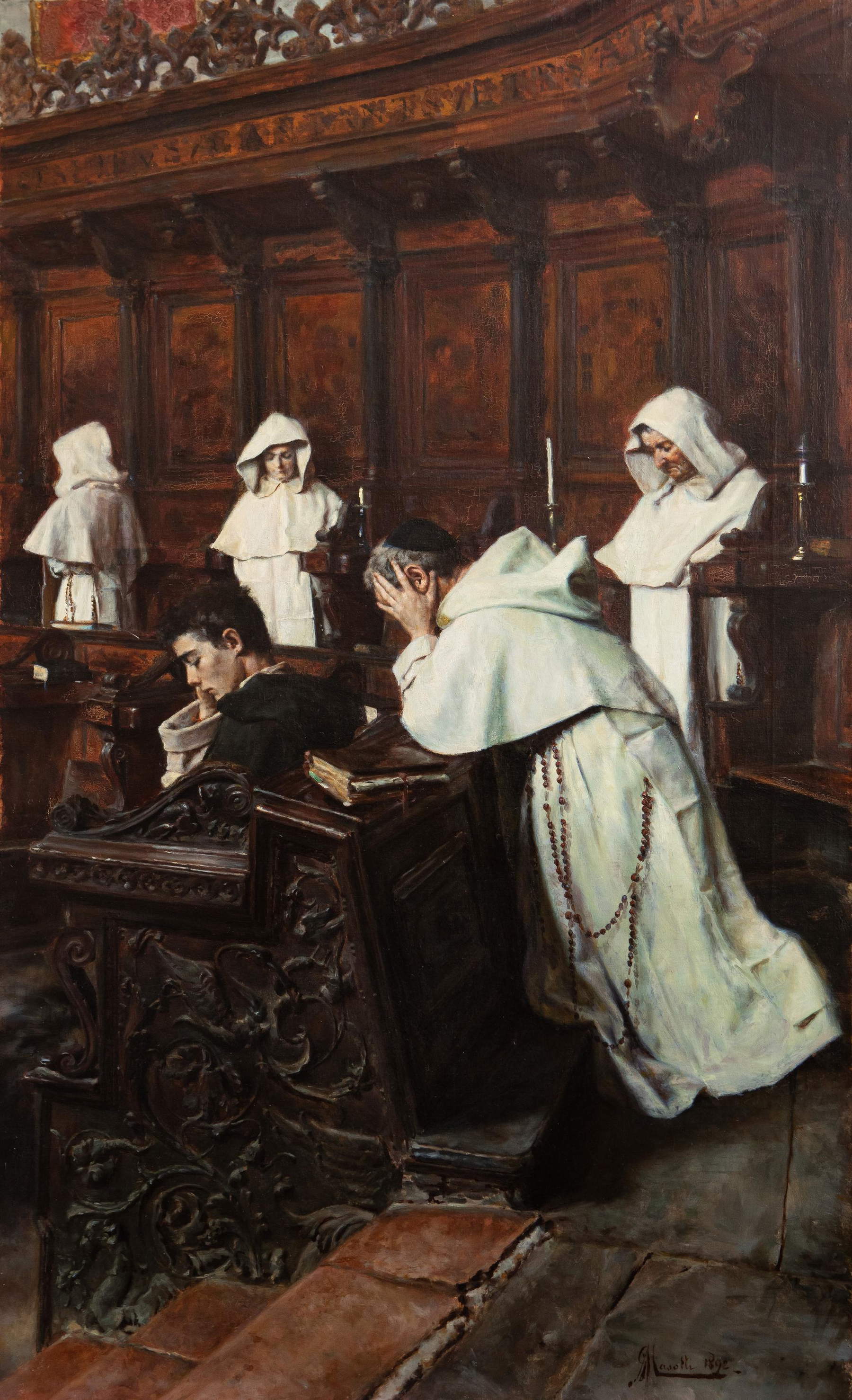
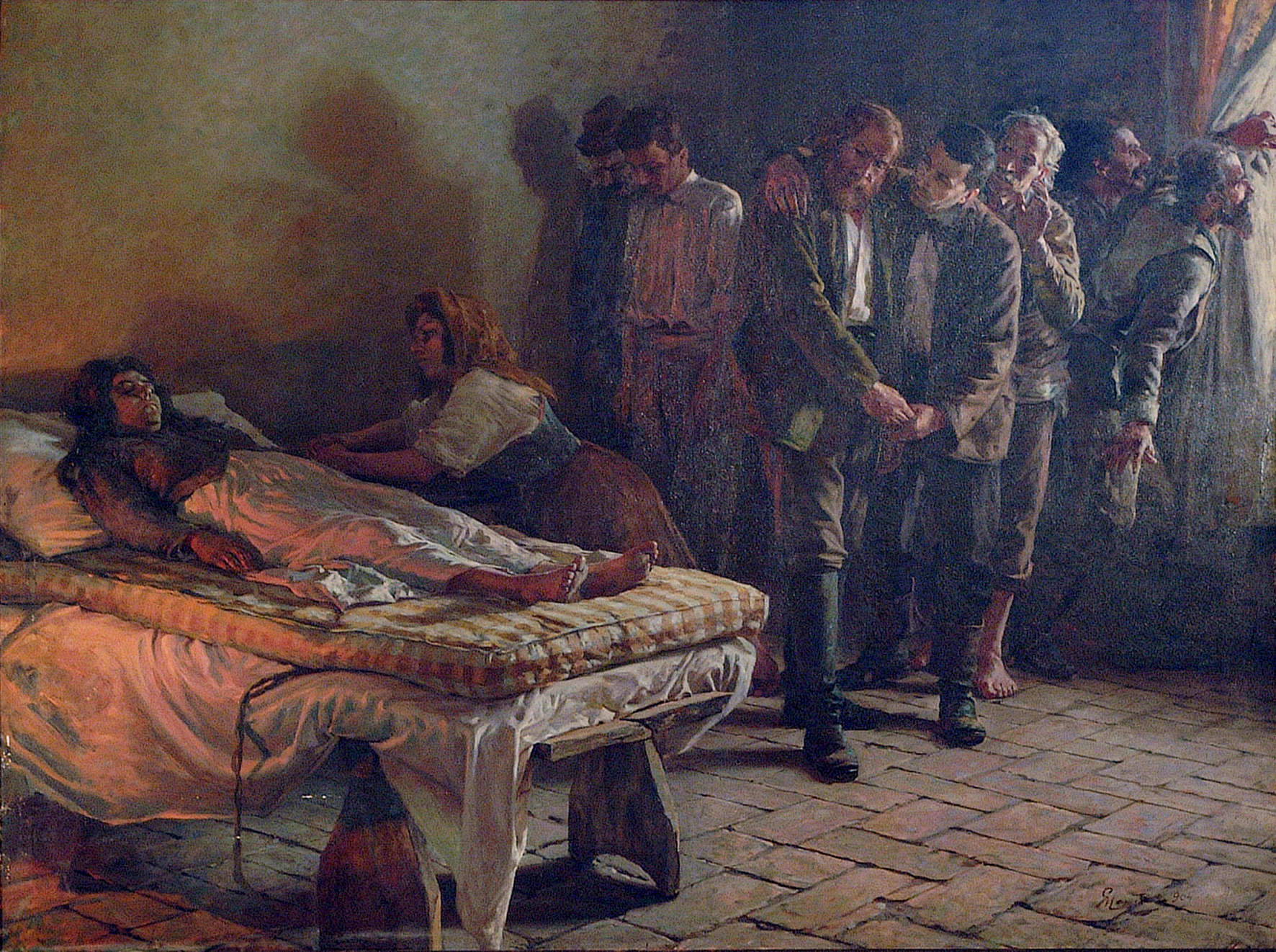
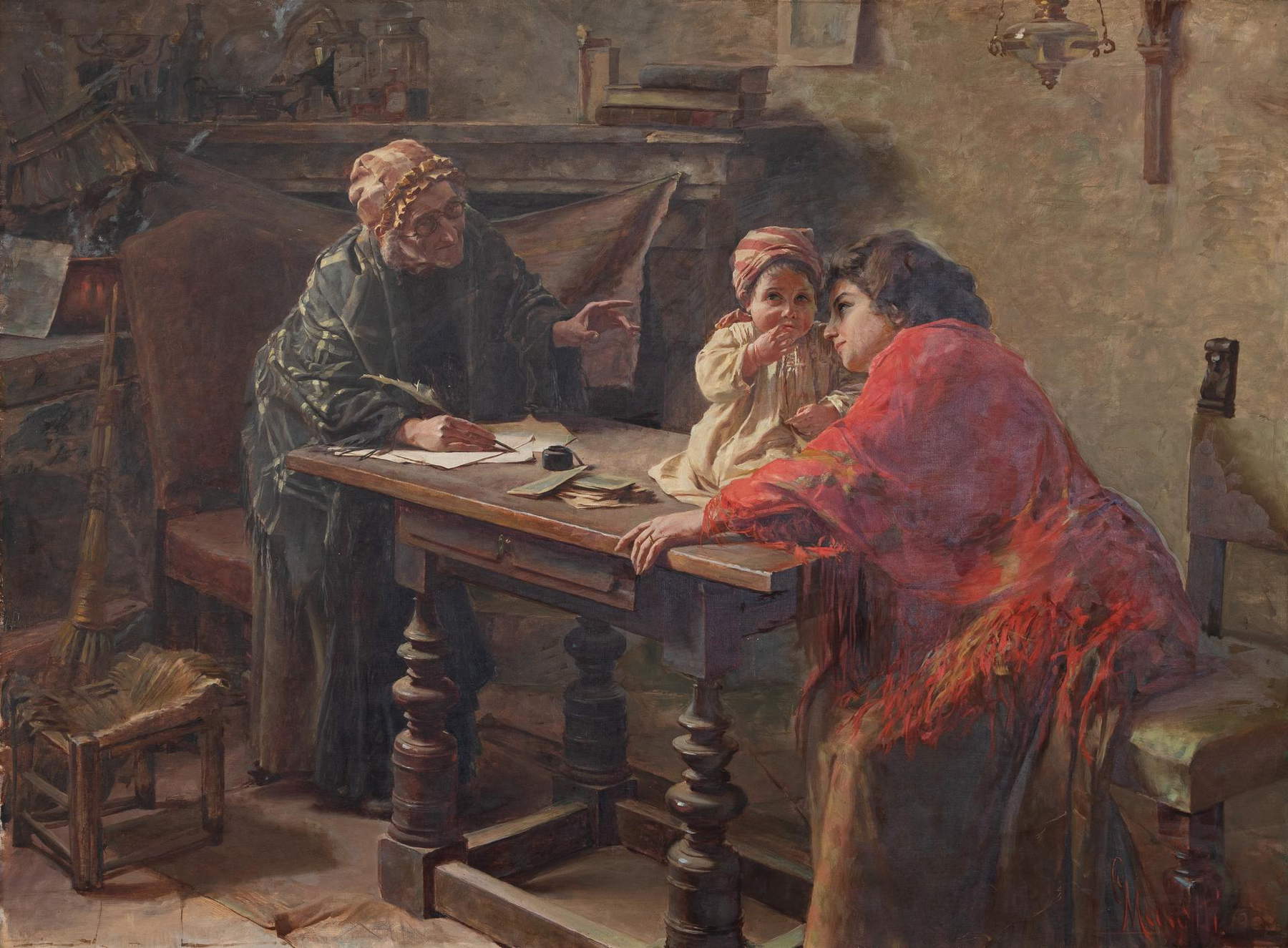 Giovanni Masotti,
Giovanni Masotti,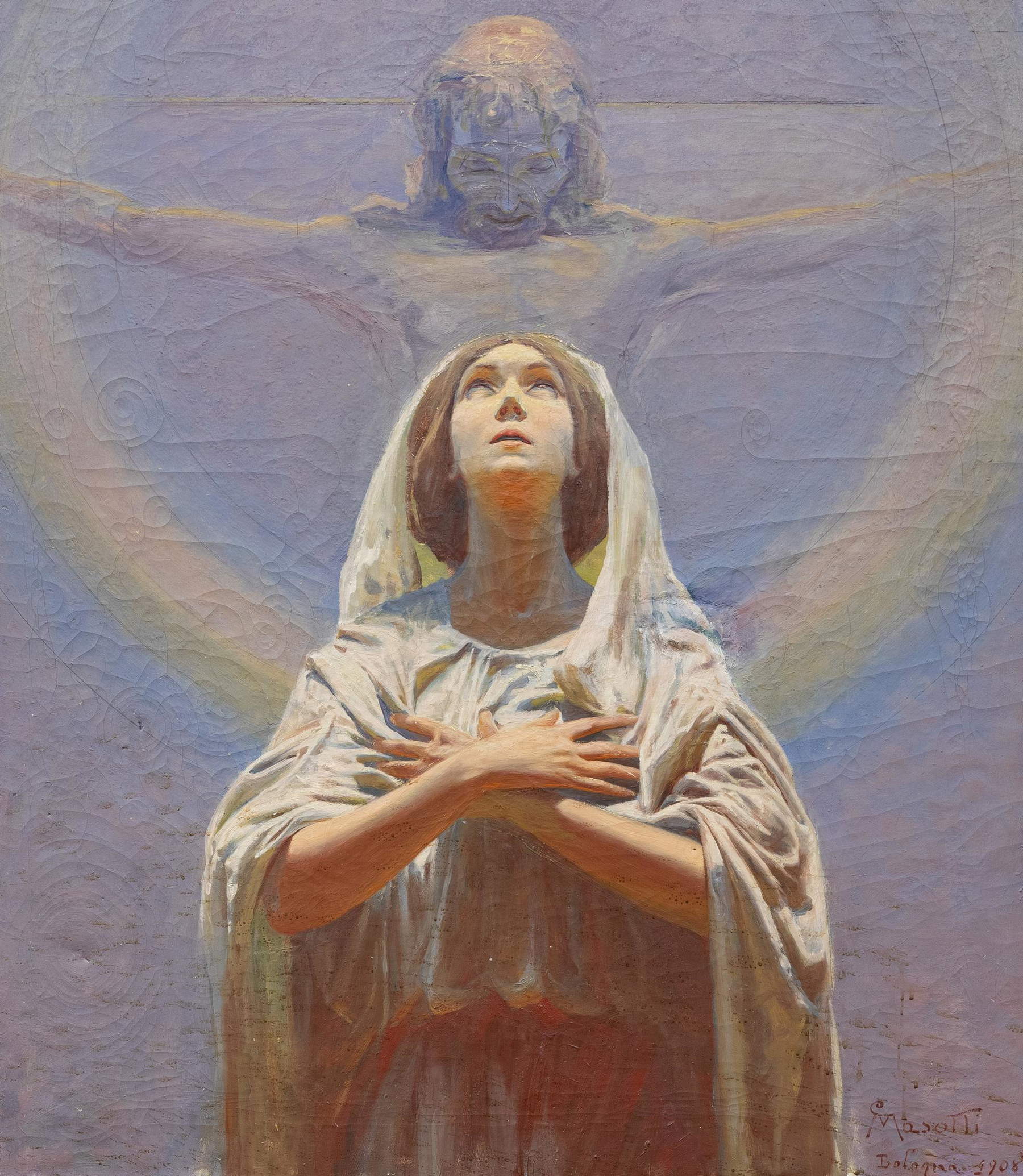 Giovanni Masotti,
Giovanni Masotti,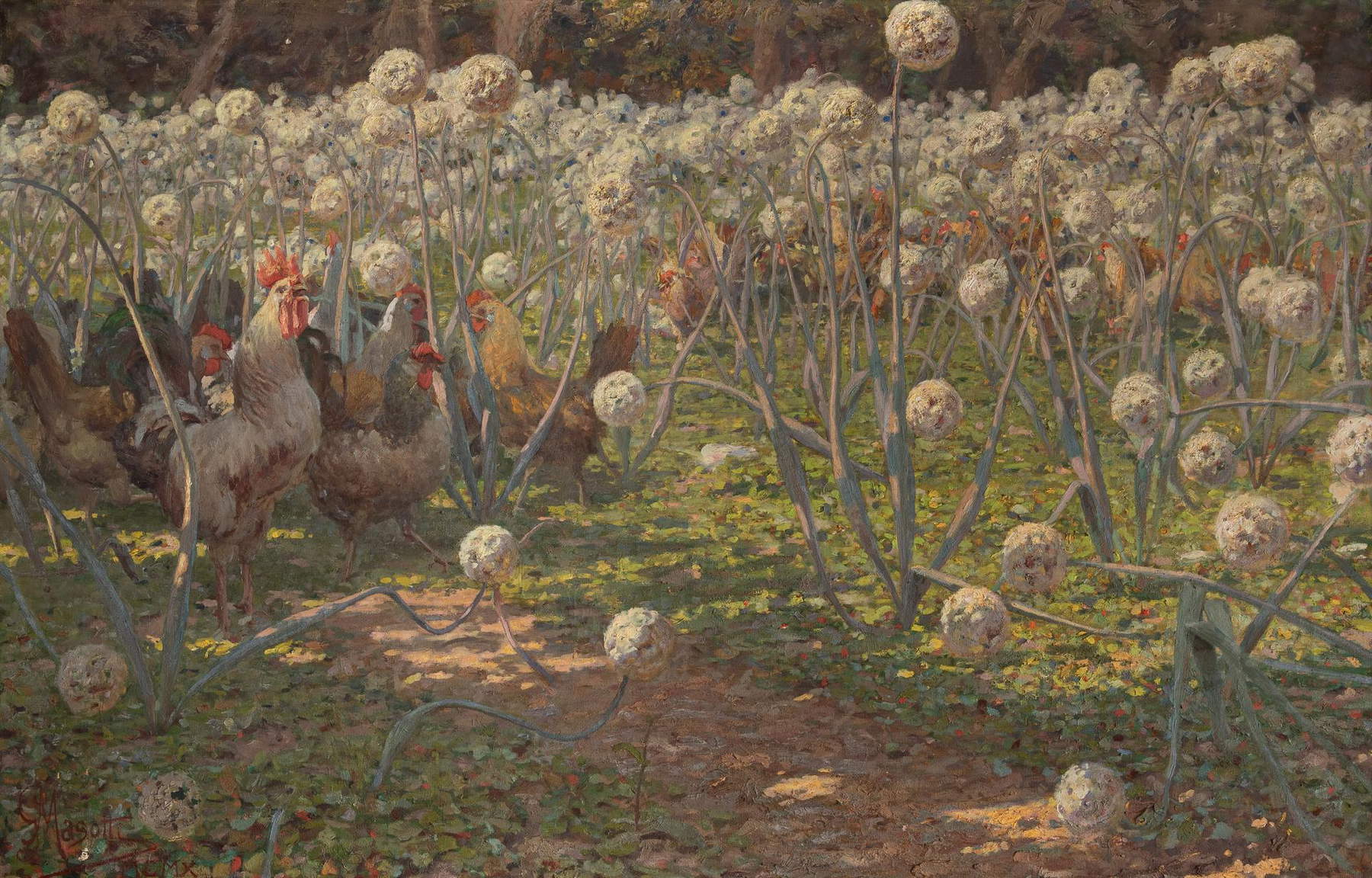
The third nucleus of works is related to social themes, a strand that Masotti had already begun to investigate in his formative years at Venturoli. In addition to the aforementioned White Flag, another example is the painting After the Storm, made in 1899, which depicts a peasant family that has lost its harvest. This work is influenced by certain Segantinian atmospheres and manners. An artist, Segantini, whose 1888 painting Alla stanga, which was exhibited in Bologna itself and is now part of the collections of the Galleria d’Arte Moderna e Contemporanea in Rome, Masotti may have seen. These paintings are joined by paintings related to the Garibaldi epic, such as the two versions of The Death of Anita Garibaldi (c. 1902-1904) on loan from the Pinacoteca Nazionale in Bologna.
It then moves on to religious painting, well represented by two paintings: Crucifixion of Christ, now preserved at the Church of Santa Maria and San Domenico della Mascarella, and The Immaculate Conception (1908), the second version of the large Immaculate Conception conceived by the artist for the Oratory of San Filippo Neri, which was lost during World War II.
The exhibition continues with a look at some decoration drawings done in pencil and watercolor on paper. He worked as an interior decorator in several private and public city buildings, such as the Caffè San Pietro and the Pasticceria Rovinazzi, showing a penchant for floral taste, which was becoming established in Bologna thanks to the figure of Alfonso Rubbiani and the experience of the Aemilia Ars.
Finally, the last chapter is represented by the paintings he made during his forced exile in Aosta, where he retired from 1910, presenting in Turin his Chanteclair, in which a group of roosters scamper in a field of agli, taking up Edmond Rostand’s bitter comedy that perfectly suited his condition as a multi-award-winning artist but, because of his tormented character, understood by few. Giovanni Masotti died prematurely in 1915 after being admitted to the Collegno Psychiatric Hospital, rendered insane by syphilis, forgotten by all and supported only by his family.
In January 2024, Cultural Dialogues at Palazzo d’Accursio, the series of free admission lectures led by scholars, scheduled at the Farnese Chapel, will return.
The Bologna Association for the Arts will also organize a series of free guided tours with the curators (for information: info@bolognaperlearti.it) and daily, University of Bologna interns will be available at the exhibition to accompany visitors on specialized guided tours, also free of charge.
Hours: Tuesday to Sunday, 10 a.m.-6:30 p.m. Closed Friday mornings and Mondays Free admission Information: Bologna Association for the Arts, Via Solferino 3, Bologna Tel. 051 582352 | info@bolognaperlearti.it |www.bolognaperlearti.it www.facebook.com/bolognaperlearti/ www.instagram.com/bolognaperlearti/
 |
| Bologna remembers painter Giovanni Masotti: an exhibition with all the works 150 years after his birth |
Warning: the translation into English of the original Italian article was created using automatic tools. We undertake to review all articles, but we do not guarantee the total absence of inaccuracies in the translation due to the program. You can find the original by clicking on the ITA button. If you find any mistake,please contact us.